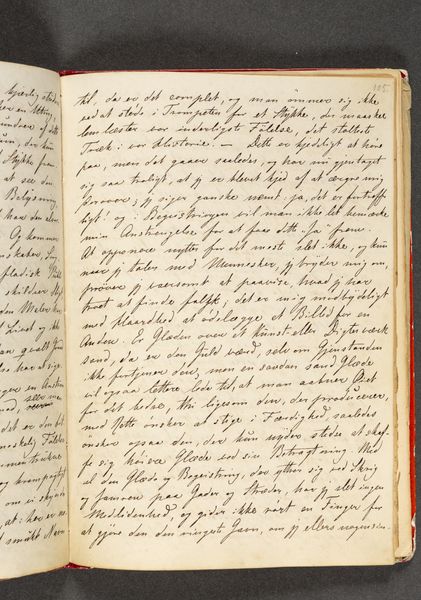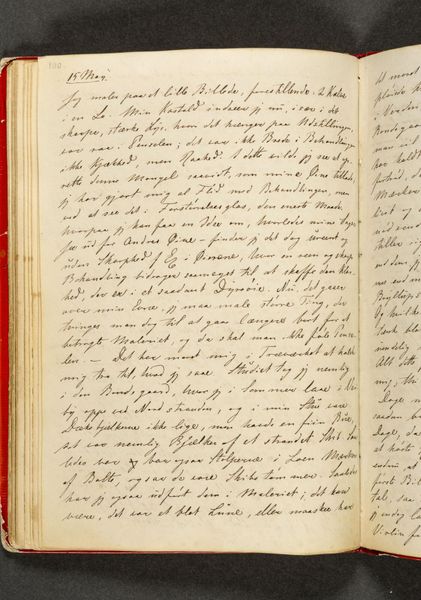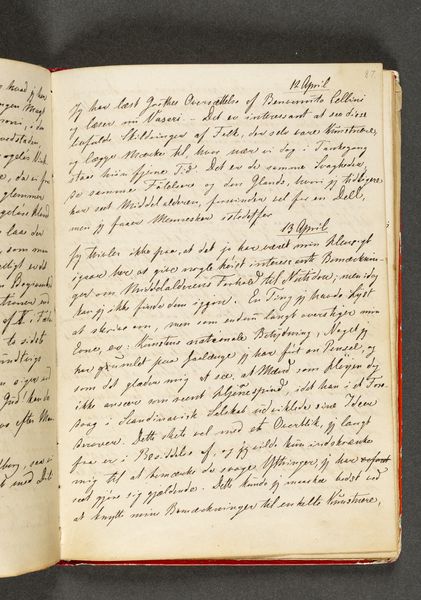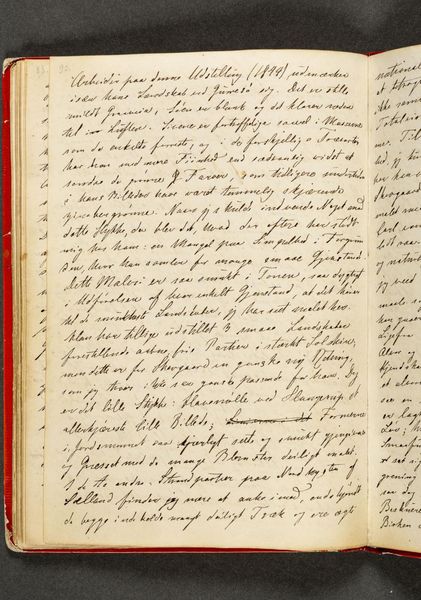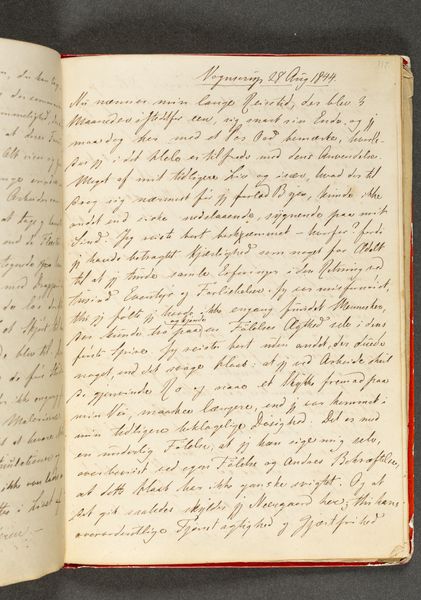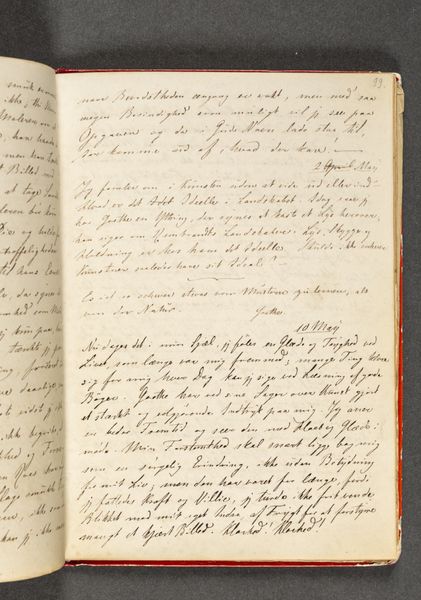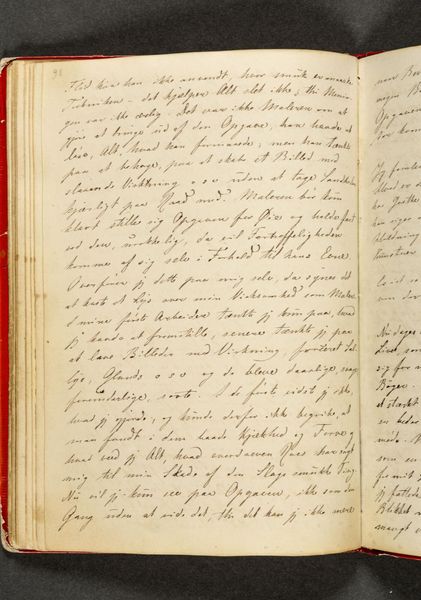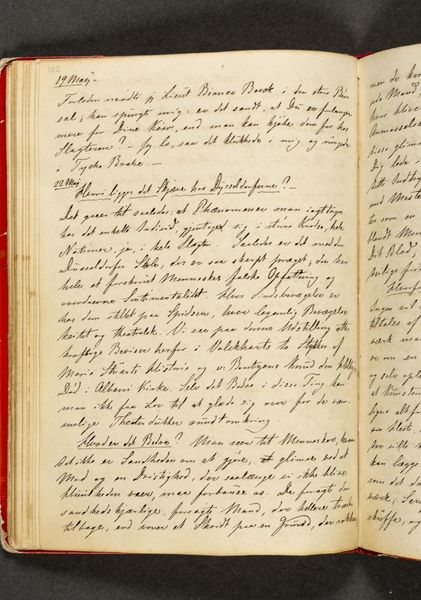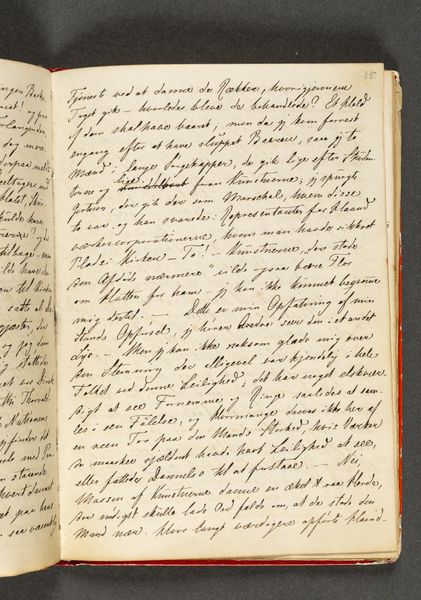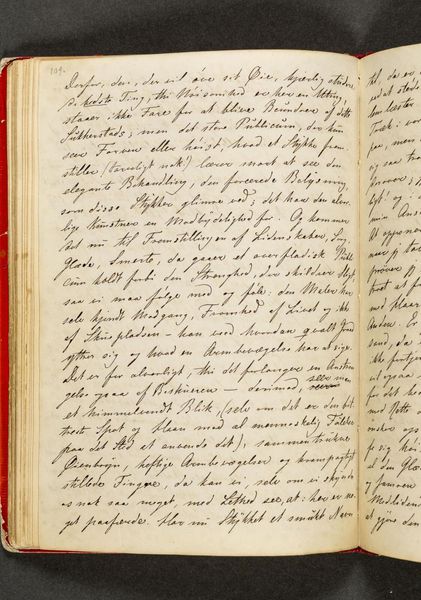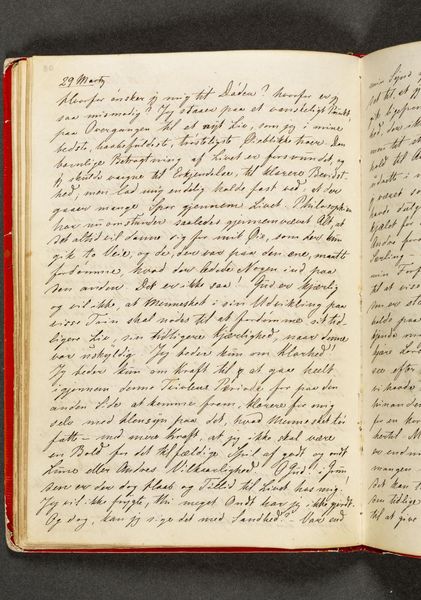
drawing, paper, ink
#
drawing
#
paper
#
ink
#
journal
#
romanticism
#
genre-painting
Dimensions: 192 mm (height) x 133 mm (width) (bladmaal)
Editor: Here we have "Dagbog. Side 103," or "Diary, Page 103," created in 1844 by Johan Thomas Lundbye, rendered in ink on paper. It feels incredibly intimate, almost like glimpsing someone’s private thoughts. How do you interpret this work? Curator: That feeling of intimacy is key. This isn’t just about the visual; it's about accessing a mind, a specific consciousness from the past. Lundbye, within the Romanticism movement, was deeply invested in connecting with nature and the self. This diary entry, written in Danish, serves as a portal. Consider: what was the role of personal writings for artists of his time? What possibilities opened with it for explorations of self and surroundings, art and experience? Editor: So, it’s like a window into his artistic process? Was this common? Curator: Precisely! It reveals the inner workings of an artist grappling with their experiences. The act of writing becomes performative. Note the intersections between the text, likely reflecting on daily observations, and the social expectation for men to leave written, and hopefully wise, legacies in the form of such personal documents. What power did men possess with access to such documents? What responsibilities do they inherit when writing their histories? Editor: I guess it reveals a certain power dynamic... whose voices get recorded and remembered? It really makes you think about who gets to write history, literally. I initially just saw a page of text but now it is also a cultural and social artifact. Curator: Exactly! It also demonstrates that beyond aesthetics, art gives testimony about society, biases, privileges, gender, race, and more, consciously or not. This seemingly simple page from a diary unfolds into a reflection on society itself.
Comments
No comments
Be the first to comment and join the conversation on the ultimate creative platform.
